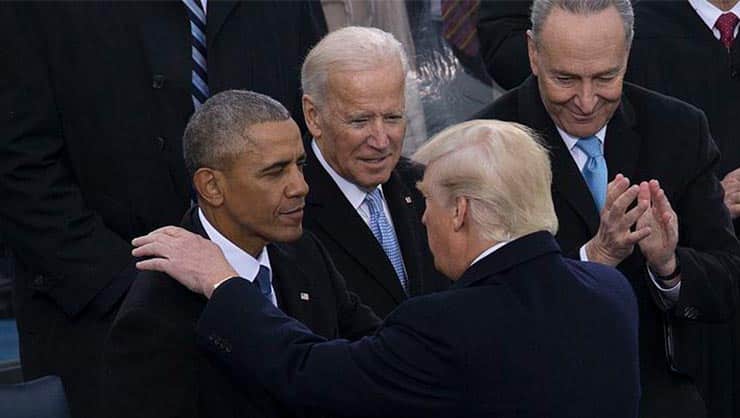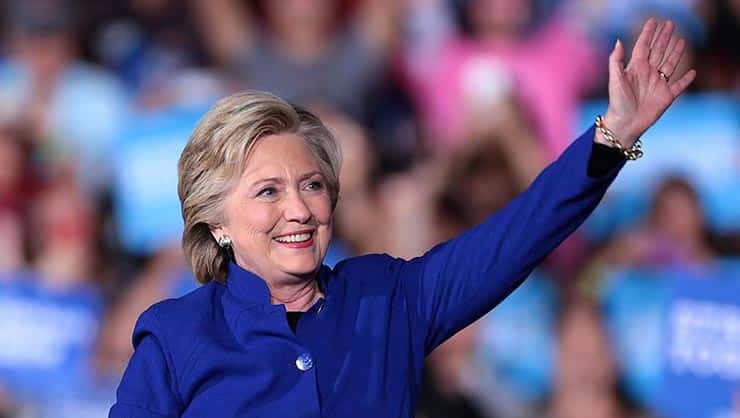During the 2020 United States presidential election on November 3, American voters will choose between Donald Trump and Joe Biden. The U.S. election system is fairly complicated: the winner is not merely decided by popular vote. Let’s dive a little deeper into two important concepts in American politics: political parties and the Electoral College.
U.S. Political Parties

Image courtesy of Wikimedia Commons
Elected officials in the United States are mostly backed by political parties. These parties – organizations of politicians, candidates for political office, and their supporters – choose the leaders that they want to represent them, and support these leaders in the elections. In the United States, there are two major political parties, the Republicans and the Democrats, that control most of the elected offices. Other parties can play a role in an election as well, but all U.S. presidents for the past 150 years have been from one of the two major parties.
Political parties are not prescribed by the Constitution of the United States. In fact, no parties had officially formed by the time of the first U.S. elections. They came about later as a way of organizing voters who agree on certain issues. George Washington, the first U.S. president, famously warned against political parties, saying that they might destroy the unity of the nation.
Whether national unity is hurt under the current system is up for debate, but it is true that the parties often disagree on key issues. The Republican Party today is considered the more conservative party and Democrats tend to support plans that are more liberal. There are other smaller parties that run the gamut from very conservative to very liberal. The candidates that run under these parties don’t often win elections but do sometimes affect their outcomes by increasing or taking support away from a candidate from one of the main parties.
Candidates can also run as Independents, or persons with no political party backing them. A candidate may run as an Independent if they can get enough support to organize their own campaign fundraising.
Electoral College
On Election Day, Americans will go to the polls and vote for President of the United States. Each U.S. Citizen is allowed one vote for president but the winner is not necessarily decided by counting up all the votes and seeing who comes out on top. U.S. Presidential Elections are determined by something called the Electoral College. The Electoral College is not some kind of university or school. It is a system in which each U.S. State is given a certain number of voting representatives to cast ballots during an election. The number of electors has varied throughout American history but in recent elections there have been a total of 538 electors divided up between the states.
The number of electors a state gets depends on their population. Vermont, having a small population, carried only 3 electors in 2008 while Texas, a big state with a large population, carried 34 electors. The residents of each state cast their votes on Election Day, the first Tuesday of November. Each ballot is counted as one vote and the winner of the most votes wins the state. A candidate wins the election by winning states. For example, in the state of California during the 2008 Presidential Election, 13,286,254 votes were cast, with over 8 million going to President Barack Obama. His main competitor, John McCain, a senator from Arizona won about 5 million votes. California, the most populous state in the country, has 55 electors, which all went to President Obama.
Why do we use such a roundabout way to select a president? It is tradition mostly. There are some pros to the Electoral College, as states with small populations don’t get wholly ignored. It is still possible to win an election without winning any of the most populated states. Most major presidential candidates make a point to visit as many states as possible, even those that don’t hold many electors. Perhaps in a strict popular vote system, candidates would spend most of their time visiting large cities and metropolitan areas, ignoring those living in rural areas or less densely populated towns.
There are criticisms of the Electoral College. The main one is that it allows for a scenario where a candidate can win the most individual votes but still lose the election. This is how George W. Bush defeated Al Gore in the 2000 election for U.S. President. Mr. Gore won 50,999,897 million total votes but only gained 266 electors. President Bush only won 50,456,002 total votes but finished with 271 electors and was therefore elected president.
Something similar occurred in the 2016 presidential election. Hillary Clinton got almost 3 million more votes than Donald Trump. However, Trump won where it counted: he beat Clinton by just 80,000 votes, spread across three Midwestern states. Winning these states gained him enough Electoral College votes to win in spite of Clinton’s lead in the national popular vote.

Image courtesy of Gage Skidmore
The other criticism is that some states end up with too much power in this system. Presidential candidates spend a lot of time campaigning in so-called swing states like Ohio, Florida and Pennsylvania. Support for the two major political parties (Republican and Democrat) are almost even in these states and they tend to have many independent voters who can be persuaded to vote for either side. These states receive a remarkable amount of news reporting, polling and attention from candidates during an election season. Indeed, many political reporters point to Clinton’s relative lack of campaigning in the Midwest as a primary cause of her narrow loss of the popular vote in those states.
In the United States, only presidents are elected using a system of electors. Governors, mayors, congresspersons, etc. are all elected by direct elections. However, we are not the only country to use such a representative process to elect a leader. Estonia, India, and Ireland use voting methods that are similar.
Polls done on American voters have found that most people would like the Electoral College to be disbanded and the president to be selected by a popular vote. To do so would require a lengthy process to amend the U.S. constitution so it is likely here to stay for the foreseeable future.
Despite the perceived flaws in the system, many Americans take pride in voting, considering it a civic duty. Although the U.S. trails most developed countries in voter turnout, those that are politically active are vocal about the importance of voting. Moreover, Twitter and social media have increased peoples’ awareness of political issues, and you are likely to see a dramatic increase in political advocacy on these platforms as the election approaches.

Image courtesy of Pexels
Although the political discourse you observe on social media might appear – and often is – bitter and accusatory, Americans are often reluctant to discuss politics in person. Doing so may be considered impolite, even in families where generations have drastically different political views. It’s a strange quirk of American culture that one could post an angry tweet denouncing the other political party, before joining family or friends belonging to that party for dinner.
But then again, all countries have their quirks, right? Want to learn more about the USA? Sticking with a political theme, here’s how television shows are intimately connected to politics. Or perhaps you’d like a break from politics. In that case, read about how different ages communicate!




